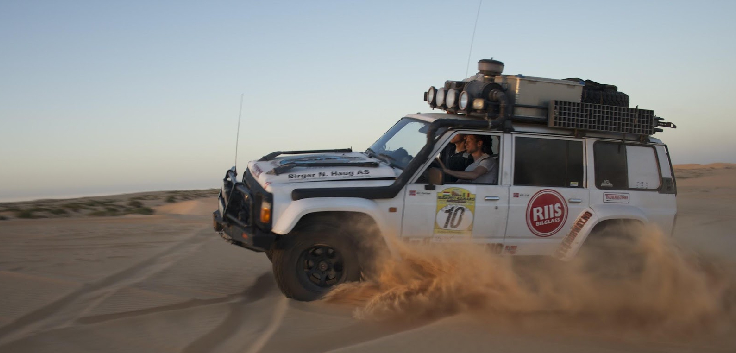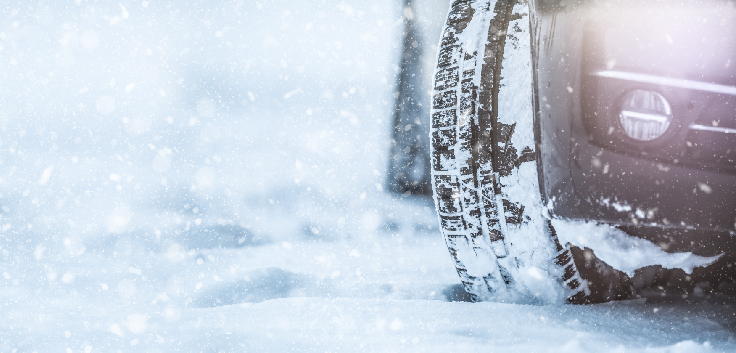Width
Current Selection:
Make
Current Selection:

How To Set Your Tyre Pressure For Off-Roading On Sand
Driving a 4WD vehicle on sand is getting very popular nowadays. Whether you are based in Dubai, Sharjah or any other area in UAE, you probably know how big the excitement of off-road sand driving is – especially if you own a vehicle with motion on all tyres.
However, off-road driving on sand is not as easy as many think. The absolute key to maintaining a solid movement is based on understanding two main principles: tyre pressure and momentum.
For instance, if you find yourself in deep and hungry sand somewhere in the desert, the best way to maintain a forward movement is the tyre pressure. This is why you need to understand how tyre pressure works in sand, and how it is different from the pressure you set when driving on the highway or within any urban area.
In today’s guide, we will cover a bit of physics, and help you understand what is the best tyre pressure for driving off-road in sand (specifically, any desert in the UAE).
Source: Offroad Aussie
The Best Tyre Pressure For Sand Driving
Dropping the tyre pressure for sand driving is something that most people are told to do before they start their off-road fun. However, most of them don’t know which is the best level to drop the tyre pressure to, and how it would affect the driving.
What you should know is that by lowering the air pressure in your tyres, you can increase their footprint, which can help your vehicle float over the (sand) surface – rather than digging into it.
Also, four wheel drivers should know that adjusting the air pressure in their tyres to suit sand driving will not only improve their off-road performance, but also help the tyre life, help prevent any tyre damage and result in a more comfortable ride.
If the sand is very soft (which is usually the case in the UAE) considering that it is fine and dry, you can drop your tyres down to as low as 15 or 16 psi, without any fear of damage. This is the recommended tyre pressure for most vehicles in the sand, although there are factors that may make you want to change this level up or down.
As long as you don’t drive too fast and don’t make any sudden movements with the steering wheel, you should be fine. On the other hand, if the sand is coarse and damp (after rains), you won’t have to lower your tyre pressure as much.
Last but not least, you should know that a lower tyre pressure in sand also reduces the chance of getting bogged, therefore preventing any strain on your vehicle’s engine and driveline components and minimizing the chance of track damage.
Factors That Affect Your Tyre Pressure When Going Off-Road On Sand
As we said above, the recommended tyre pressure for most vehicles in sand is 15 psi or 16 psi, based on your specifications. However, there are many factors that affect this. For instance, the tyre pressure can go to as low as 12 psi in some cases.
The factors that contribute to how low you should go are:
- Sidewall stiffness: If your tyres have stiff sidewalls, they will act as support and prevent the tyre from flattening out. Reducing your tyre pressure will allow the tyre footprint to increase. Generally speaking, tyres with more flexible sidewalls will allow for ballooning sooner, causing a larger footprint to be created at higher pressures.
- Tyre aspect ratio (vs. wheel diameter): The lower your tyre profile is, the less you will be able to reduce the pressure without risking any potential damage to the rim.
- Driving speed: Driving fast with reduced tyre pressure can cause damage to your tyres, or cause the tyre separate from the rim. So, if you intend to drive fast, increase your tyre pressure without exceeding the maximum for sand driving.
- Trail surface and softness: Dry sand and wet sand are not the same. On rugged surfaces (dry sand which easily traps the vehicle), you should always lower your tyre pressure. However, if the sand is wet, the tyre pressure should not be lowered that much. A rule of thumb is that the softer the sand gets, the lower your tyre pressure needs to go.
- Vehicle weight: Lighter or less loaded vehicles will need a lower tyre pressure to achieve the ‘balooning effect’ on sand.
If you are still unsure of how low you should go with your tyre pressure, you should take the surface as the main criteria. The looser it is, the lower the pressure required. You can start with 16 psi and lower it in small increments (2-4 psi) when struggling.
Additional Tips That Can Help You In The Desert
Sand driving is easy only when it is done correctly. Many people don’t have a chance to gain experience in this field, which is why we decided to list some great tips that can help you and your 4×4 make most of the fun in the sand.
First of all, you should always carry a shovel with you. No matter how careful you are, sooner or later you are going to get bogged on the sand (it happens to all of us) which can also make your trip more exciting and worth sharing with your friends. When you are bogged, you should always try to reverse out of it. Instead of trying to drive out of it and going even deeper, put your vehicle in reverse and try to get out. If that doesn’t work, try dumping more air out of your tyres. If time is not a factor, break out the shovel and dig a ramp out of the hole you are in – a scenario that is guaranteed to work in most cases.
Beginners in the world of sand driving should also consider getting traction aids. After all, these items are a surefire way to get out of the sand, preventing slipping. When stuck in the desert, they need to be wedged down under your wheels and with a gentle acceleration, you will be free from the trap. The good thing is that most of these accessories are cheap and will always be there for you in an unlikely scenario.
Off-road enthusiasts driving in the deserts of UAE also carry sand flags with them. So, we definitely recommend having a sand flag fitted to your vehicle. This will help the other vehicles see you before it’s too late. The most typical flags are the high-vis orange flags which are attached to a long pole fitted to your bullbar. Any 4×4 store or commercial outlet should have them.
On the subject of steering, you should only apply smooth input into the steering wheel and feel your vehicle. Apply a little throttle as you turn in, rather than letting the soft stuff dictate your turns. If you are forcing the steering wheel too much, the low tyre pressures you are running can cause the bead of the tyre to roll off the rim.
Lastly, you should know that sand driving requires a big dose of calmness. If you are trapped in the sand, you should never panic. Also, if you are attempting to climb a dune but can’t make it, you should never try to turn around – instead, reverse back down in a straight line to prevent a rollover. Similarly, you should avoid travelling side-on when on a dune, mostly because it is an easy trap and one that can use gravity against you, again rolling your vehicle on the roof.
Final Thoughts
As you can see above, there are different tyre pressure recommendations for different 4WD vehicles. All of the recommendations should only be listed as a general guide. After all, there are many different conditions such as track condition, vehicle weight, tyre sizes and more that should always go into consideration when making a decision on how much to lower your tyre pressure.
Lowering your tyre pressures for off-road driving means that they will generate more heat, so speeding and steering have to be adjusted and should never be forced by the driver.
Finally, you should never forget to inflate your tyres to the recommended pressure once you are back on the road. Doing this will help you prevent any damage. The best way to do that is to get a 12V compressor that uses the power within your car to inflate the tyres and saves you time and money.
Speaking of which, experts always recommend to look over each tyre (when re-inflating) to check for potential signs of damage, and repair/replacement if necessary. Oh, and never forget to give your 4WD a good wash when you are home – sand and salt can rust it out quicker than anything, so make sure that doesn’t happen!
Need advice on the best tyre pressure for your 4×4 sand driving? Or the best set of tyres for your 4WD vehicle by a certified reseller? Contact us today to schedule your appointment!




The information below is required for social login